At present, there are over 125 research studies on CES in
humans and 29 experimental animal studies. The overwhelming
majority of the scientific research is extremely positive.
No significant lasting side effects have been reported. Harvard
University School of Public Health, Department of Health
Policy and Management found: "The meta-analysis of anxiety
showed CES to be significantly more effective than sham (P<.05)
| A 386% increase in attention span test results
after just 20 minutes of a single CES treatment in
healthy volunteers - Southworth S, A Study of the Effects
of Cranial Electrical Stimulation on Attention and
Concentration, Integrative Physiological and Behavioral
Science, 1999, Vol 34:1, 43-53. |
Is
CES safe?
CES has an unblemished safety record. A broad reading
of published literature on the subject shows no negative
effects or major contraindications from its use, either in
the U.S. or in other parts of the world. The National Research
Council has deemed CES a non-significant risk modality.
The unit's sole source of current are three common 1.5 volt
batterys. Its intensity is limited —no more than is
required to run a small toy or a penlight. Even when turned
to maximum intensity, it is not harmful. It is suggested,
however, that until you become fully acclimated to your unit,
you maintain the intensity at a lower setting.
Does
CES Help with ???
| Insomnia: |
Stress |
Learning |
Serotonin |
Alpha |
Pain |
| Normalize sleep patterns |
Reduces tension-Blood
pressure |
Addictions |
Beta-endorphins |
Theta |
Panic |
| Depression |
Elevates mood |
Meditation |
Euphoria |
Delta |
Anxiety |
CHECK
OUT THESE LINKS BELOW
and make up you own mind
CES
in the United States has received Food and Drug Administration
marketing clearance for the treatment of anxiety, depression,
and insomnia. CES devices are sold over the counter
in Europe and other parts of the world. Mooddisordered
alcoholics have shown increased activity of the enzyme
MAO-B in the spinal fluid after 20 CES treatments.
(3) Patients with treatment-resistant depression have
shown significant (P < 0.0089) elevations in plasma
serotonin. (4) Increases in cerebrospinal fluid levels
of [beta]-endorphins up to 219%, plasma endorphinsendorphins
(endôr`finz), neurotransmitters found in the
brain that have pain-relieving properties similar to
morphine. There are three major types of endorphins:
beta endorpins, found primarily in the pituitary gland;
and enkephalins and up to 98%, and cerebrospinal fluid
serotonin up to 200% have been demonstrated in normal
volunteers receiving 20 minutes of CES. A recent annotated
bibliography of CES by Kirsch details 126 human and
29 experimental animal studies of CES conducted over
the past 40 years. More than half the studies cited
are from the peer-reviewed literature. The majority
of the studies were double-blinded and conducted at
major American universities. In aggregate, there were
6,007 patients treated under varying research conditions,
with 4,541 actually receiving CES treatment. One hundred
twelve (89%) of the studies reported positive outcomes.
Seventeen studies followed up the patients to assess
any continued results after 1 week to 2 years, and
all the patients showed at least some residual effect
after one or a series of treatments.
Source |
Cranial
Electrotherapy Stimulation: A Non-Drug Neuromedical Treatment

The
microcurrent, delivered in a unique waveform, moves electrons
through the brain at a variety of frequencies, collectively
known as harmonic resonance. This normalizes the electrical
activity of the brain as measuredby an electroencephalogram
(EEG).
This explanation sounds a little suspect and I can't vouch
for the veracity of the claim. We did a search in PubMed
to see if any recent studies have been performed using CES.
Apparently they recently tested this device for generalized
anxiety disorder with some promising results.
A
pilot study of cranial electrotherapy stimulation for generalized
anxiety disorder.
82% of participants in one study suffering from
an anxiety disorder reported a significant improvement
in their symptoms after treatment with CES.
- Kirsch D, Gilula MF, Electromedicine: CES in the Treatment
of Anxiety Disorders, Practical Pain Management, March
2007, pp 40-47. |
Treated
patients showed a 28% improvement in tender point scores,
and a 27% improvement in self-rated scores of general pain
level. The number of subjects rating their quality of sleep
as poor dropped from 60% at the beginning of the study to
5%. In addition, there were significant gains in the self-rated
feelings of well-being and quality of life, plus gains in
six stress-related psychological test measures.
The
treatment of fibromyalgia with cranial electrotherapy stimulation.
One study reported an average 67% effectiveness
in treating sleeping disorders among 648 patients,
while increasing daytime vigilance.
- Smith RB, Cranial Electrotherapy Stimulation, Oklahoma:
Tate Publishing and Enterprises, LLC. 2007, pp 37-43. |
They
have also done a study to reduce pain in patients with spinal
cord injury.
Using
cranial electrotherapy stimulation to treat pain associated
with spinal cord injury.

In animal studies at the University
of Tennessee Medical Center, researchers used drugs
to deliberately upset the homeostatic balance among
the brain's neurotransmitters in canine subjects.
In this way they induced Parkinson-like behavior
in the dogs. Once all drugs were removed from their
bloodstream, and the animals were put back on normal
feeding schedules, they returned to normal behavior
within 3-7 days. If CES treatment was applied at
the time the drugs were removed, all animals returned
to normal within 2-8 hours. The researchers concluded
that CES was effective in bringing back to pre-stress
homeostasis, neurotransmitters that had become
If that were a mechanism of action,
then many kinds of medical conditions should respond
to CES, and research soon found that CES was effective
in the treatment of addictions, (11-13) in head injury,
(14) in various types of cognitive dysfunctions,
(15-16) and more recently in reflex sympathetic dystrophy.
(17-18) In addition, the use of CES in the treatment
of many types of pain patients has been documented,
(19,20) and ongoing studies are documenting the effectiveness
of its use in treating patients suffering from the
difficult fibromyalgia syndrome. (21-22)
Still, it came as something of a surprise when
within the past 12 months, two testimonial letters
arrived in our office from MS patients describing
highly positive experiences with CES. One woman noted, "I
have used the CES for about three weeks. It relieves
intense pain and puts me in a very relaxed state.
I use it at least three to four hours a day." A
man wrote regarding his wife's use of CES for her
MS, "My wife suffers from MS. She is classified
as a chronic progressive patient. Within a few days
of using the (CES device), my wife was not getting
tired as fast as before. She could hold up to eight
hours of activity instead of 3-4 hours ... my wife
has cut back dramatically on the amount of medication
she used to take." (23)
Ray B. Smith "The use of cranial electrotherapy
stimulation in the treatment of multiple sclerosis". |
This
paper reviews the scientific literature on cranial electrostimulation
(CES) as a non-chemical means to alleviate opiate withdrawal
symptoms
Cranial
electrostimulation (CES) use in the detoxification of opiate-dependent
patients.
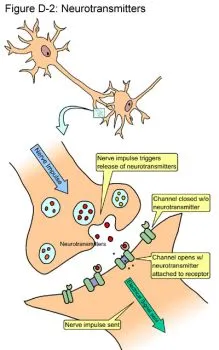
Learning causes changes in synaptic connectivity
between one neuron and another. Dendrites
increase in length, change branching patterns, and the
number of spines alter. Connectivity is
altered not only by increasing the actual number of synapses
but also by altering the size or
position of any particular synapse.
Johnson, George. In the Palaces of Memory: |
Safe
Effective Nondrug Treatment of Chronic Depression: A Review
of Research on Low-Voltage Cranial Electrical Stimulation
and Other Adjunctive Therapies
What's 3 times better than Prozac?
CES was found to be two times more effective in treating
depression than the most effective antidepressant
drugs on the market. In fact, CES treatment is
3 times as effective as fluoxetine (Prozac) in
the curing of depression, compared to placebo (fake
treatment).
- Gilula MF, Kirsch DF, Cranial Electrotherapy Stimulation
Review: A Safer Alternative to Psychopharmaceuticals
in the Treatment of Depression, J Neurotherapy, 2005:
9(2), pp 7-26.
|

Cranial
Electrotherapy Stimulation Review: A Safer Alternative
to
Psychopharmaceuticals in the Treatment of Depression
One study reported an average 92% increase in beta-endorphins
in the CSF after only 20 minutes of a single CES treatment.
- Shealy CN, Cady RK, et al., Cerebrospinal Fluid and
Plasma Neurochemicals: Response to Cranial Electrostimulation,
J Neurol Orthop Med Surg, 1998, 18, pp 94-97. |

Cranial
Electrical Stimulation
One study reported an average 92% increase in beta-endorphins
in the CSF after only 20 minutes of a single CES treatment.
- Shealy CN, Cady RK, et al., Cerebrospinal Fluid and
Plasma Neurochemicals: Response to Cranial Electrostimulation,
J Neurol Orthop Med Surg, 1998, 18, pp 94-97. |
Cerebrospinal
Fluid and Plasma Neurochemicals- Response to Cranial ...
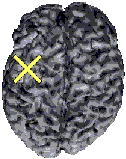
We
Sing The Mind Electric
Cranial
Electrotherapy Stimulation (CES), Chi,Homeostasis, and
the Bioelectrical System
The Research\ Studies section starts with an article on CES
and chi, homeostasis and the bioelectrical system. Following
this are some articles by Ray Smith, Ph.D. that are recently
completed summary studies or meta-analyses of different cogent
CES topic areas. Following these articles are broad range
database literature search results. I hope you enjoy these
readings.
And an extensive Research / Studies Section provides much
of the solid scientific documentation for the claims
Possible range
of benefits are based on 20 years of experience and observation
Reduced Pain
Ability to Focus
Lucid Dreaming
Deep Relaxation
Alzheimer's
Disease
Chronic headaches
Centering and Calmness
Reduced Nervous Energy
Deeper, more Restful Sleep
Better Sexual Performance
Improved Mental Abilities
Traumatic head injuries
Short Term Memory Improvement
Increased Mental and Physical Energy
Reduced Negative Behavior Patterns
Heightened Alpha Brainwave Patterns
Improved Attention Span and Concentration
FAQ
Everything you wanted to know about CES...
Transcutaneous
Cranial Electrical Stimulation (Limoge’s Currents)
Decreases Early Buprenorphine Analgesic Requirements After
Abdominal Surgery
A study done in Texas reported an 83% positive
response after CES treatment in patients suffering
from severe aggression attacks that could not be managed
by drugs. 67% of these severely aggressive patients
that had been permanently institutionalised were well
enough to be discharged after three months of daily
CES treatment.
- Childs A, Price L, Cranial Electrotherapy Stimulation
Reduces Aggression in Violent Neuropsychiatric Patients,
Primary Psychiatry, 2007: 14(3), pp 50-56. |
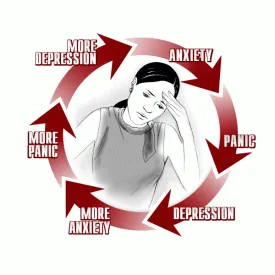
Cranial
Electrotherapy Stimulation (CES):A Safe And
Effective Non-Pharmocological Treatment for Anxiety
| " Imagine how your life and career
would improve if you could learn faster and retain
much more without constant revisions ?"
Research shows that the key to speed learning
is your state of mind before, during and immediately
after your learning session.
It is when you are in a state of relaxed alertness
that you will achieve the greatest improvement in memory
together with increased concentration and creativity.
You Can
Improve memory and retention of study material
Enhance understanding during learning sessions
Accelerate new language learning
Increase maths ability |
AN
INTRODUCTION TO CRANIAL ELECTROTHERAPY STIMULATION
| Other brain wave activity such as Alpha (8-12 Hz)
and Delta (0-4 Hz) are generally not focused on by
ADHD-Neurofeedback research. Worth noting is that in
normal development, Alpha increases between the ages
of 12-14, while Theta levels decrease at this time
(Swartz, 1995). This maturational stage is delayed
in ADHD population throughout the 12-14-age range.
For example Mann, et al. (1992) found that ADHD boys
showed continued increased levels of Theta representative
of brainwave activity in younger children. More |
Transcutaneous
cranial electrical stimulation

Click on picture to view source
The
Human Brain: How We Decide from Science
in Action on Vimeo.
;
How
does CES work?
As with a number of medicines, the mechanism of action (how
it works) of CES is not fully understood. Research has led
to the hypothesis that it has a mild effect on the hypothalmic
area of the brain. Researchers also have noticed rapid increases
in serotonin, also associated with relaxation and calmness,
and decreases in cortisol, one of the primary stress-related
biochemicals. Interestingly, CES also increases levels of
norepinephrine and dopamine, both associated with alertness
and feelings of pleasure. This may be why so many CES users
report feeling both relaxed and alert and slight to moderate
euphoria after use.
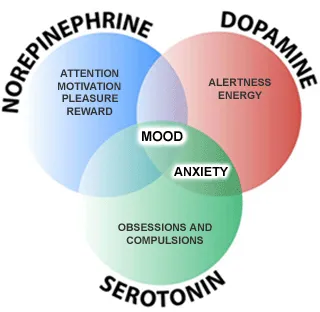
Click on picture to view source
Wide
variety of Applications
Possible
Explanations
The microcurrent, delivered in a unique waveform, moves electrons
through the brain at a variety of frequencies, collectively
known as harmonic resonance. This normalizes the electrical
activity of the brain as measuredby an electroencephalogram
(EEG).
The exact physiological mechanism by which CES works is
not fully understood and is still the subject of research
study. It is hypothesized, however, that CES acts by indirectly
stimulating brain tissue in the hypothalamic area, causing
the brain to manufacture various neurohormones and restoring
them to pre-stress homeostasis.
Is
CES safe?
CES has an unblemished safety record. A broad reading
of published literature on the subject shows no negative
effects or major contraindications from its use, either
in the U.S. or in other parts of the world. The National
Research Council has deemed CES a non-significant risk
modality.
The unit's sole source of current are common 1.5 volt
batterys. Its intensity is limited —no more than
is required to run a small toy or a penlight. Even when
turned to maximum intensity, it is not harmful. It is
suggested, however, that until you become fully acclimated
to your unit, you maintain the intensity at a lower setting. |
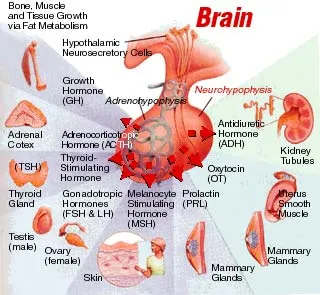
It appears that CES influences areas of the
brain called the thalamus, hypothalamus and the reticular
activating system. It also seems to stimulate the vagus nerve,
producing a state of parasympathetic nervous system dominance.
The parasympathetic nervous system has a general calming
effect on the body. This is certainly consistent with the
effects observed with CES. CES has been documented to normalize
the body’s electrical fields. This has been measured
on EEG (brain wave tracing). For example, people with moderate
to severe pain from osteoarthritis were found to have abnormal
brain wave activity. After five minutes of CES treatment,
brain waves were virtually normal and pain was reduced by
more than fifty percent. It has been found that individuals
whose brain waves improved the most had the greatest pain
relief. It is postulated that CES restores normal electromagnetic
communication between cells. This may have the effect of
regulating cellular differentiation, tissue repair, and immune
function.
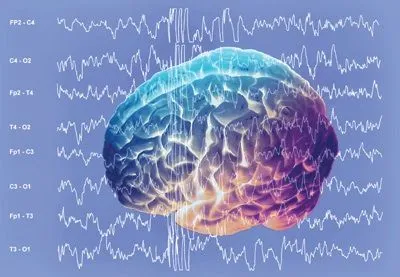
Click on picture to view source
Case
Studies / Vignettes Section
The efficacy of CES has been demonstrated in many different
ways. Studies have used twenty-seven different psychometric
(pencil and paper) tests including the Minnesota Multiphasic
Personality Inventory and the State/Trait Anxiety Inventory.
CES has consistently demonstrated reductions in anxiety on
these tests. Other studies have measured the physiological
manifestations of anxiety before and after CES treatment.
Slowing of brain waves and respiration rate, as well as reduction
in blood pressure are physical signs of stress reduction
that have been documented with CES treatment. One placebo-controlled
study evaluated the effects of CES treatment in twenty individuals
with chronic stress symptoms of at least a year’s duration.
All of them had failed to respond to medication. Muscle tension,
heart rate and finger temperature were measured before, immediately
after, and one week following a single twenty minute CES
treatment. Muscle tension and heart rate decreased and finger
temperature increased immediately after treatment in those
receiving active CES treatment but not in the placebo (sham
CES) group. One week after treatment, those who had received
active CES treatment still had significantly reduced muscle
tension and heart rate! This is one of the many advantages
of CES over medications. Whereas medications only work as
long as they are taken, CES effects are long lasting and
cumulative.
Homeostasis can be defined as the tendency
for intrinsic balance within a system. Application of a
range of CES appears to enhance the Balance of the biological
central nervous system. A change in one system within the
individual will have correlative effects upon other systems.
Improvements in mood, cognitive function, self image, shift
of locus , control to oneself, and sense of well being
can be measured. When CES works, it enhances one's ability
to handle or deal with situations that were previously
beyond the range of one's control.

